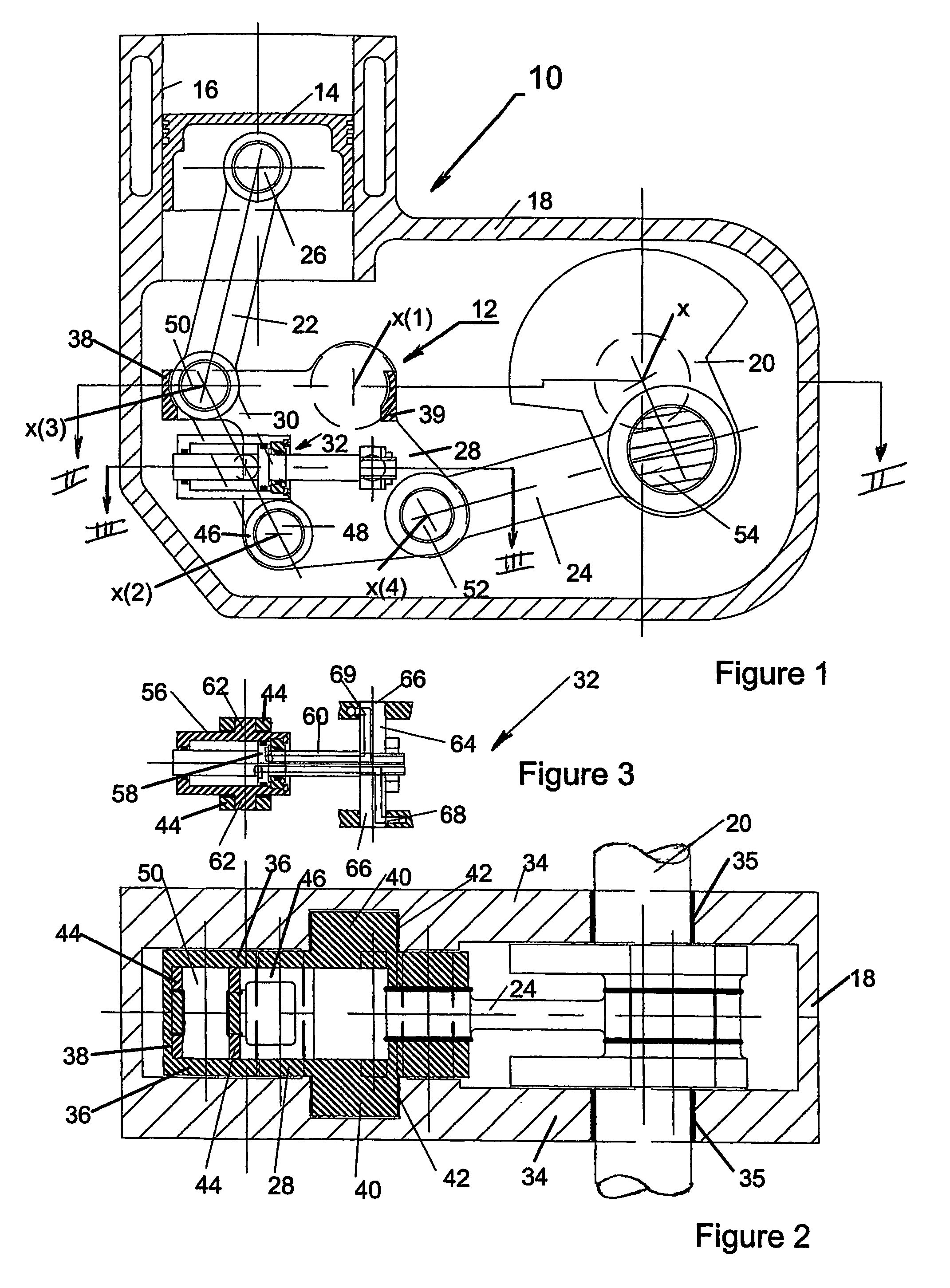Mechanism for internal combustion piston engines
a technology of internal combustion piston engine and piston engine, which is applied in the direction of connecting rods, output power, bearings, etc., can solve the problems of reducing overall efficiency, high fuel consumption, and most of these attempts have not been successful or effectiv
- Summary
- Abstract
- Description
- Claims
- Application Information
AI Technical Summary
Benefits of technology
Problems solved by technology
Method used
Image
Examples
first embodiment
[0084]FIGS. 1 to 4 illustrate an engine 10 according to the present invention which incorporates a rocking mechanism 12 according to the present invention. More specifically, the mechanism 12 enables one piston 14 of a plurality of pistons of the engine 10 to be completely de-activated and re-activated as required. The activation / de-activation may be while the engine is in motion, even in motion at a fast rate, as demanded by a vehicle in which the engine 10 is provided, via sensors (not shown) and an engine management system (also not shown).
[0085]The engine 10 may have more than one (or even all) of its pistons each provided with a respective mechanism 12. However, as will be understood, the engine 10 needs to have at least two pistons 14 of which at least one needs to remain active at all times the vehicle is in motion. Once the vehicle has become stationary and the ignition turned off, any piston not previously de-activated can be de-activated by the vehicle management system.
[0...
second embodiment
[0101]FIGS. 5 to 7 illustrate an engine 110 according to the present invention which incorporates a rocking mechanism 112 according to the invention. Many components of the engine of FIGS. 5 to 7 are similar to those of engine 10 of FIGS. 1 to 4 and, where this is the case, the same reference numeral plus 100 is used. Also, as functioning of engine 110 generally will be understood from the description in relation to FIGS. 1 to 4, the description of engine 110 will be limited to principal features by which it differs from engine 10.
[0102]The engine 110 shows an in-line cylinder arrangement, although the features of this can be used in a V-type configuration. The arrangement of engine 110, illustrated with reference to one piston and cylinder, can be used for each piston and cylinder such that the stroke of each piston can be adjusted individually or in groups at a very fast rate as demanded by the vehicle via sensors and an engine management system. In addition, the geometry of the l...
third embodiment
[0112]FIGS. 8 to 10 illustrate an engine 210 according to the present invention which incorporates a rocking mechanism 212 according to the invention. Many components of the engine of FIGS. 8 to 10 are similar to those of engine 10 of FIGS. 1 to 4 and, where this is the case, the same reference numeral plus 200 is used. Also, as functioning of engine 110 generally will be understood from the description in relation to FIGS. 1 to 4, the description of engine 110 will be limited to principal features by which it differs from engine 10.
[0113]As with engine 10 of FIGS. 1 to 4, engine 210 enables complete de-activation and re-activation of pistons, either individually or in groups. This is possible while the engine is in motion, even at a very fast rate, as demanded by a vehicle in which the engine is provided via sensors and an engine management system. The engine 210 of FIGS. 8 to 10 is specifically one of a V-type multi-cylinder configuration in which one bank of cylinders can be made...
PUM
 Login to View More
Login to View More Abstract
Description
Claims
Application Information
 Login to View More
Login to View More - R&D
- Intellectual Property
- Life Sciences
- Materials
- Tech Scout
- Unparalleled Data Quality
- Higher Quality Content
- 60% Fewer Hallucinations
Browse by: Latest US Patents, China's latest patents, Technical Efficacy Thesaurus, Application Domain, Technology Topic, Popular Technical Reports.
© 2025 PatSnap. All rights reserved.Legal|Privacy policy|Modern Slavery Act Transparency Statement|Sitemap|About US| Contact US: help@patsnap.com



